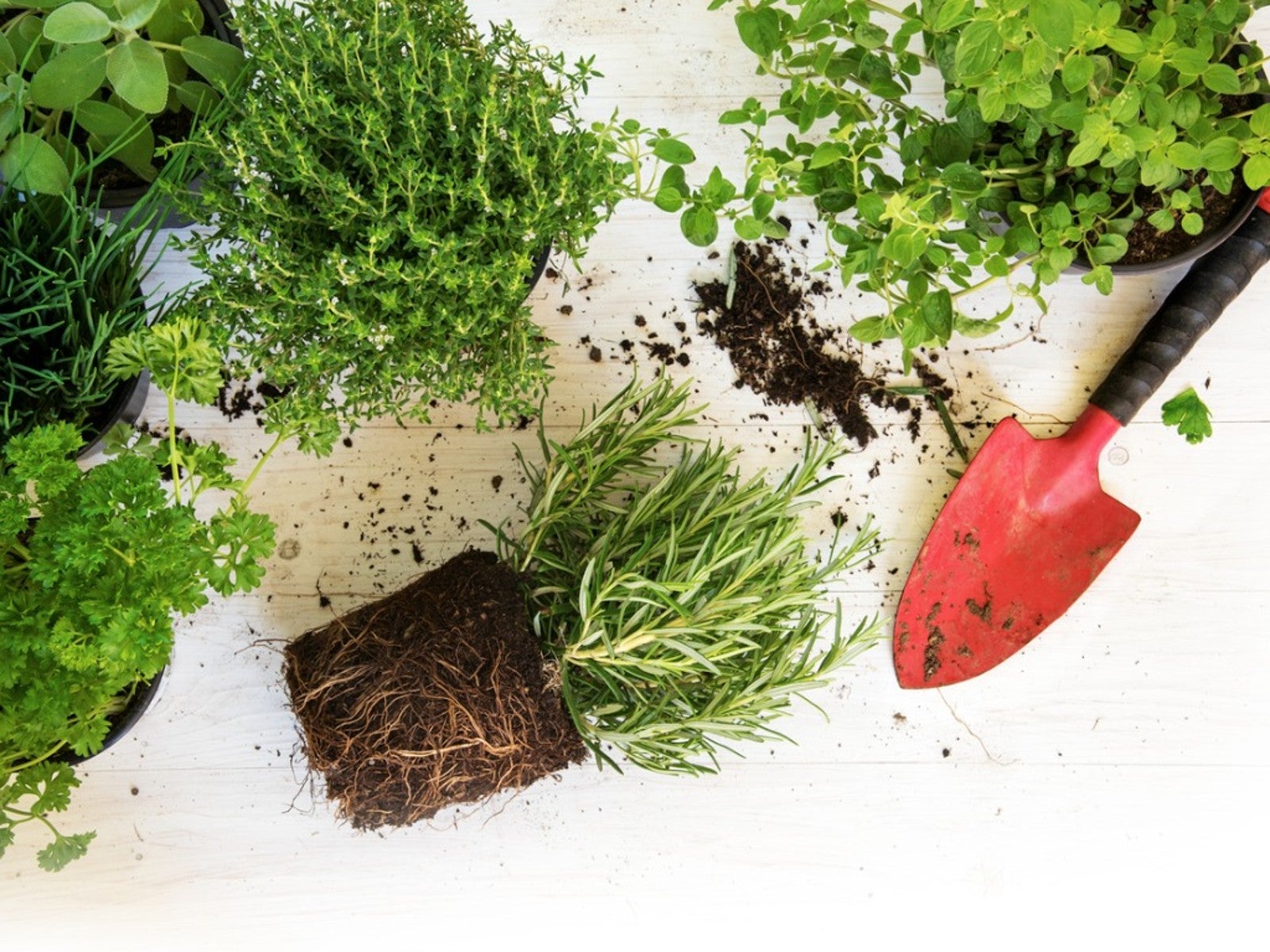Best Herbs To Direct Sow Vs. Start Indoors


Far too often, we lump herbs into the same gardening category. Yet the term “herb” encompasses a wide variety of plants that can be acquired in a number of ways. Whether you desire a large herb garden or a few plants for the kitchen window, knowing when to buy herb plants or start them from seeds or cuttings is essential to your success.
The Best Herbs to Direct Sow
The majority of herbs can be started from seeds, but the best herbs to direct sow are those which don't transplant well. These can be started outdoors either in the garden or in large pots. Many of these herbs readily self-seed and only need to be planted one time.
One of the alternatives to direct sowing is to start herb seeds indoors. These plants benefit from the headstart they receive in the protected environment inside the home or greenhouse. Transplant herbs outside only when all danger of frost has passed.
When to Buy Herb Plants
You may be surprised to learn that not all herb plants can be started from seed. For instance, true peppermint is a hybrid that produces sterile seeds. It must be propagated vegetatively in order to make new peppermint plants.
Gardeners may also find it quicker and easier to start new herb plants from cuttings rather than seed. This is especially true for hard-to-germinate herbs, like lavender. Use the following info to help you decide whether to buy, sow or transplant herbs:
- Basil – This cold sensitive herb is easily propagated from cuttings, but gardeners can also direct sow basil or start herb seeds indoors.
- Borage – One of the best herbs to direct sow, borage is a self-seeding hardy annual.
- Caraway – This cold-hardy, self-seeding biennial doesn't transplant well. Direct sow caraway as soon as the soil can be worked.
- Chamomile – Although chamomile can be started indoors, it's easier to direct sow this self-seeding herb as the seeds require sunlight to germinate.
- Chervil – This cool-season annual has a long taproot that resists transplanting. Direct sow chervil in early spring after danger of freeze or heavy frost have passed.
- Cilantro (coriander) – Direct sow cilantro in the spring and this short-lived annual will reseed itself throughout the growing season.
- Dill – Due to its long taproot, dill can be difficult to transplant. Direct sow this self-seeding annual 2 weeks before the last frost date.
- Fennel – As a self-seeding tender perennial, herb fennel is one of the best herbs to direct sow. In subsequent years, thin volunteer fennel seedlings to prevent plants from becoming weedy.
- French tarragon – This perennial doesn't flower or produce seeds, but French tarragon can be propagated by root division.
- Italian oregano – Plan on purchasing this plant or getting cuttings from a friend as Italian oregano seeds are sterile.
- Lavender – While this herb can be grown from seed, lavender seeds are notoriously hard to germinate. Instead, propagate from cuttings.
- Parsley – This biennial can be started inside or outdoors. For faster germination, soak parsley seeds overnight before sowing.
- Peppermint – While many types of mint can be grown from seeds, peppermint is a hybrid that must be propagated vegetatively.
- Rosemary – This evergreen shrub is hard to grow from seed, but rosemary stems readily root in water.
Sign up for the Gardening Know How newsletter today and receive a free copy of our e-book "How to Grow Delicious Tomatoes".

Laura Miller has been gardening all her life. Holding a degree in Biology, Nutrition, and Agriculture, Laura's area of expertise is vegetables, herbs, and all things edible. She lives in Ohio.